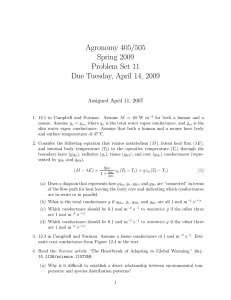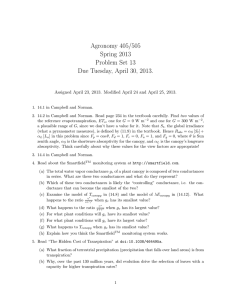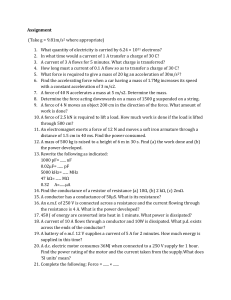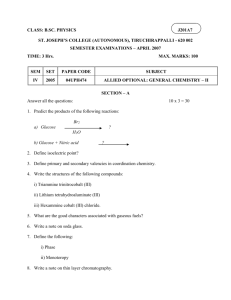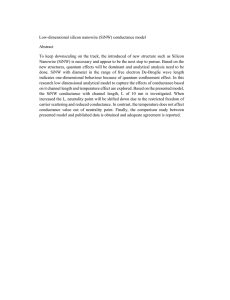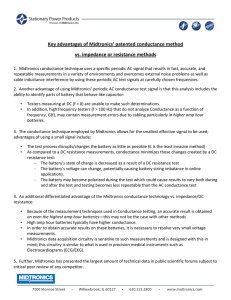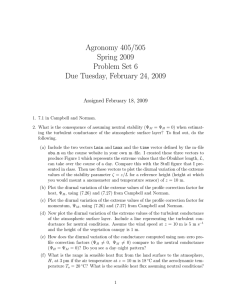Agronomy 405/505 Spring 2011 Problem Set 12 Due Tuesday, April 19, 2011.
advertisement
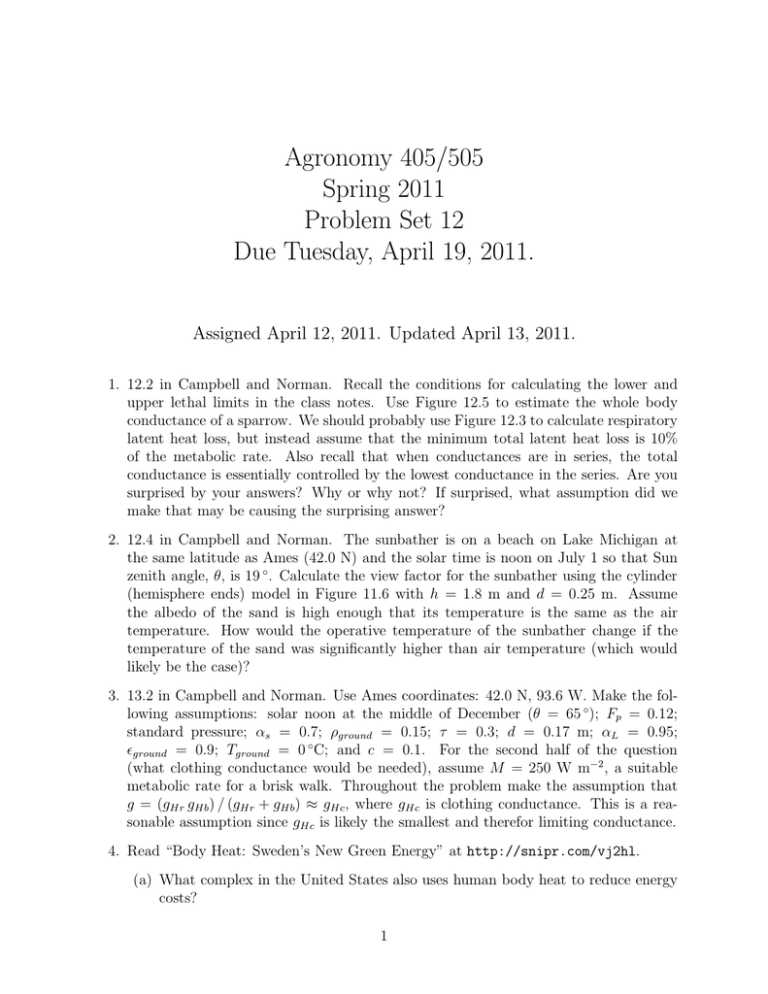
Agronomy 405/505 Spring 2011 Problem Set 12 Due Tuesday, April 19, 2011. Assigned April 12, 2011. Updated April 13, 2011. 1. 12.2 in Campbell and Norman. Recall the conditions for calculating the lower and upper lethal limits in the class notes. Use Figure 12.5 to estimate the whole body conductance of a sparrow. We should probably use Figure 12.3 to calculate respiratory latent heat loss, but instead assume that the minimum total latent heat loss is 10% of the metabolic rate. Also recall that when conductances are in series, the total conductance is essentially controlled by the lowest conductance in the series. Are you surprised by your answers? Why or why not? If surprised, what assumption did we make that may be causing the surprising answer? 2. 12.4 in Campbell and Norman. The sunbather is on a beach on Lake Michigan at the same latitude as Ames (42.0 N) and the solar time is noon on July 1 so that Sun zenith angle, θ, is 19 ◦ . Calculate the view factor for the sunbather using the cylinder (hemisphere ends) model in Figure 11.6 with h = 1.8 m and d = 0.25 m. Assume the albedo of the sand is high enough that its temperature is the same as the air temperature. How would the operative temperature of the sunbather change if the temperature of the sand was significantly higher than air temperature (which would likely be the case)? 3. 13.2 in Campbell and Norman. Use Ames coordinates: 42.0 N, 93.6 W. Make the following assumptions: solar noon at the middle of December (θ = 65 ◦); Fp = 0.12; standard pressure; αs = 0.7; ρground = 0.15; τ = 0.3; d = 0.17 m; αL = 0.95; ǫground = 0.9; Tground = 0 ◦ C; and c = 0.1. For the second half of the question (what clothing conductance would be needed), assume M = 250 W m−2 , a suitable metabolic rate for a brisk walk. Throughout the problem make the assumption that g = (gHr gHb ) / (gHr + gHb ) ≈ gHc , where gHc is clothing conductance. This is a reasonable assumption since gHc is likely the smallest and therefor limiting conductance. 4. Read “Body Heat: Sweden’s New Green Energy” at http://snipr.com/vj2hl. (a) What complex in the United States also uses human body heat to reduce energy costs? 1 (b) What happened to the body heat generated at the train station before it was used to help heat a nearby building? (c) What are some of the limitations to this kind of energy system? (d) Why might this kind of system not “catch on” in the United States as quickly as in other countries? 5. Read “Differences in Thermal Tolerance Among Sockeye Salmon Population,” doi: 10.1126/science.1199158. (a) The authors predicted that “migration distance... would exert the strongest selection pressure on aerobic scope.” Was this confirmed? See Figure 2. (b) What is the name of the most challenging section of the Fraser River system? (c) Define the variable Tp that is mentioned on page 112. (d) Speculate what might happen if the water temperature at the river feature named in Part 5b increases in the future. (e) Which population of sockeye salmon appears to have the greatest tolerance for climate change? 2

